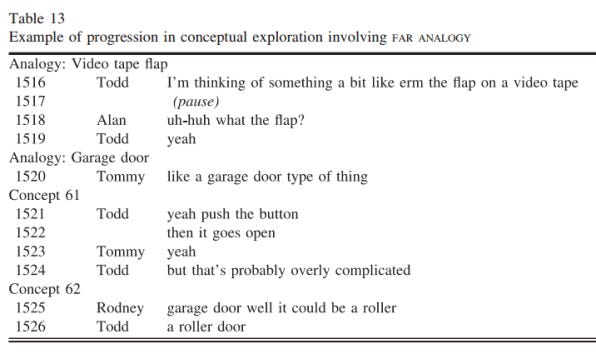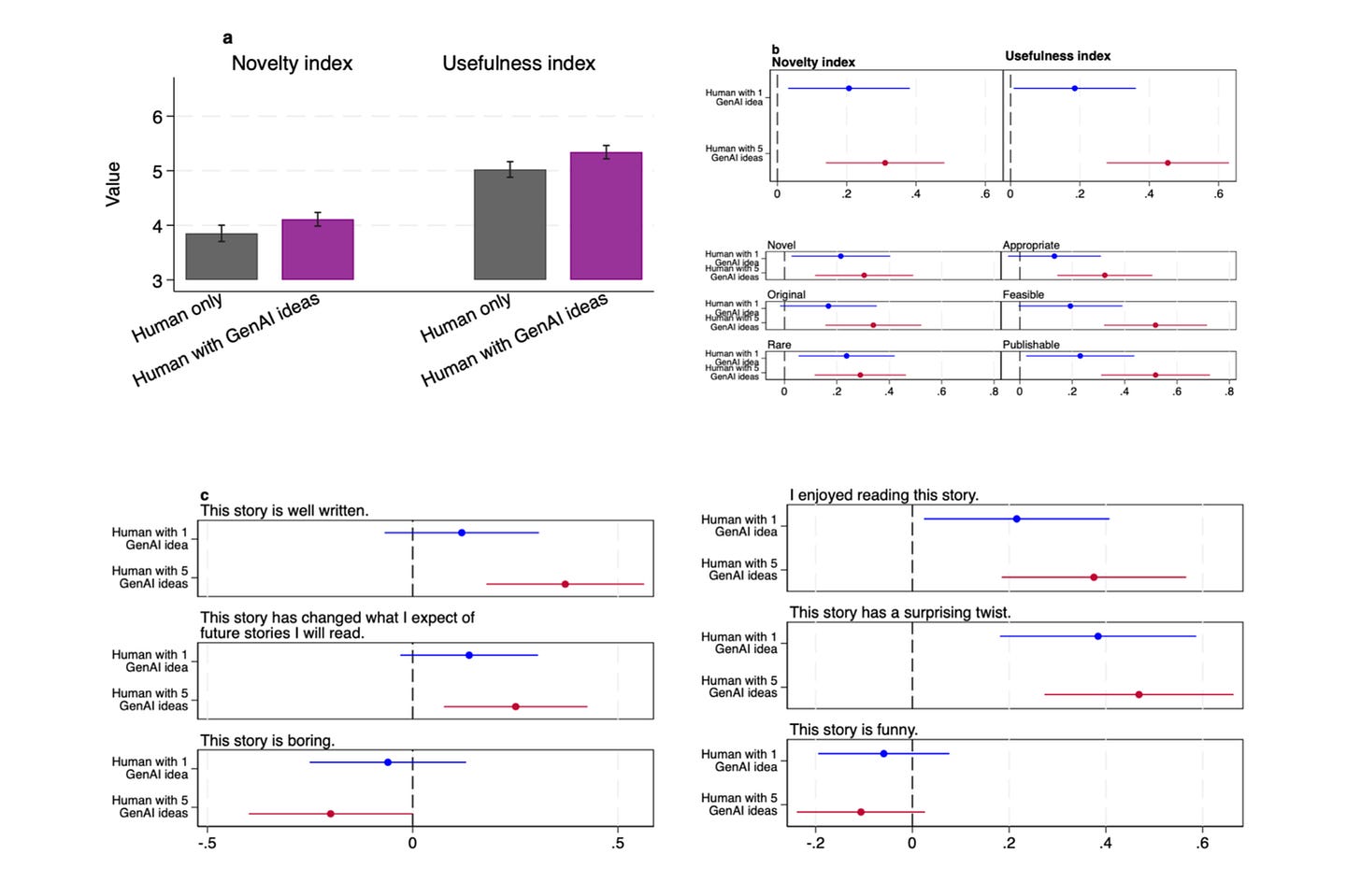Hey there! I’m Joe Lazer and this is my newsletter on the future of content and storytelling in the AI age. I’m a creative writer and author who daylights as a tech CMO. If you got this newsletter, you either subscribed, or someone forwarded it to you — if that’s the case, just click the blue button below!
Two years ago, I found myself in writing hell.
I had a six-week-old baby and a demanding job running marketing at a fast-growing tech startup. On top of that, I was trying to write the next episode of Resignation, the TV show I co-created with my writing partner, Shane Snow.
Night after night, I’d sit in the dark on the floor of my son Max's nursery, my face glowing in the blue light of my Macbook.
One night, Max woke up, stared straight at me, and shrieked. And I knew why: I looked absolutely insane.
My face contorted in anguish as I tried to think of a half-decent joke to finish a scene. I looked like a Millennial version of Jack Nicholson in The Shining.
I was stuck, wasting hours, terrified that I’d let my writing partner down. And so, once I got Max back to sleep, I turned to ChatGPT to help me brainstorm. Most of its suggestions sucked, but moments later, I had the joke. Like Drano, ChatGPT had ripped through my writer’s block. I could finally move on.
From that moment, I’ve embraced AI as a creative companion — even though I’ve never used a sentence it’s written.
Most people use generative AI the wrong way. As a content-generation machine, AI is unremarkable; it floods the internet with slop devoid of original thought. But as a researcher and brainstorming partner, it can be magical — enhancing our human creativity through small, powerful leaps.
AI and the science of creativity
In 2014, researchers from the University of Pittsburgh set out to better understand creativity by studying engineers developing innovative new products.
We tend to think that creativity comes in big leaps — the dramatic “Eureka!” moments we see in movies. But in fact, creativity comes in small steps.
As the researchers wrote: “Idea A spurs a new but closely related thought, which prompts another incremental step, and the chain of little mental advances sometimes eventually ends with an innovative idea in a group setting.”
For instance, one group in the study was designing a hand-held printer for kids and was trying to figure out how the door might close. One participant suggested it could work like a VCR tape flap. Another then suggested a garage door. Finally, a third landed on the idea of a roller door.
You see the progression below — how each team member uses each other’s analogy as a springboard to a better idea.
AI can give us unlimited ideas to jolt our creativity, and it’s already been shown to be a big boost for writers.
For instance, two British researchers ran an experiment comparing writers who worked alone to write a short story to writers who used AI to help generate story ideas. The writers who used AI as a creative springboard wrote much higher-quality and novel stories than those who did not.
Using AI in this way might give some writers the ick, but it’s the same basic mechanism as creative writing prompts. A simple catalyst for creativity, fighting back against the tyranny of the blank page.
This principle also applies to creative problem-solving. A recent study at Proctor & Gamble found that an individual with an AI teammate was better at solving a business challenge than a team of two humans.
Logically, this makes sense — you can get a lot more information and ideas out of an AI teammate than you can from a random human partner. It’s like having an infinite army of Ivy League interns at your disposal, and they’re never hungover or tired. (Although they may occasionally be on acid.)
And again, these ideas don’t even have to be good! Bad ideas can just as easily catalyze those small steps of creativity that lead to a brilliant one.
I say this from experience. I just finished a 60-page proposal for my next book, and AI has been an incredible help in the research, brainstorming, and editing process. OpenAI’s Deep Research tool has saved me countless hours by doing detailed, well-cited background research. Anthropic’s Claude has talked me through tricky issues with the book’s structure and served as a tireless editor, pointing out flaws I couldn’t see. Even though every single fucking suggestion Claude has given me for a chapter title has been claw-my-eyes-out-awful, those bad suggestions have consistently inspired me to think of better ones.
We should be wary of AI as a content generator and question the hype spewing from Silicon Valley. But we should also embrace AI as a tool to unleash our own creativity. Give it a try. And don’t be too threatened. Even in studies where AI ideas outranked those of humans, there’s a consistent trend: the AI’s concepts were eerily similar. The wildest ideas still lie in the magic hops of the human mind.
If you liked this story, you might also like:
RENT: The 4 Elements of Great Stories, According to Neuroscience
Why the Hell Is OpenAI Training a Creepy Creative Writing Model?
Recommendations
Why Corporate America Is Running From DEI (Eric Solomon / Psychology Today): My friend Eric Solomon nails the sheer idiocy behind companies abandoning diversity, a business practice that’s been consistently proven to drive better business results. You can take issues with some DEI programs, but diverse teams make better decisions 87% of the time, as well as higher corporate profits.
The Trump Administration Accidentally Texted Me Its War Plans (Jeffrey Goldberg / The Atlantic): If you haven’t read this piece by now, drop everything you’re doing and read it now. Holy shit.
Millennials Were the Last Generation to Have It All (Liz Plank / Airplane Mode): This essay hit me so hard.
The virtual world wasn’t more important than the real one. We went out, drank vodka sodas, made mistakes, and those mistakes stayed in the bar bathroom. You could have a bad night without it showing up in someone’s group chat five seconds later. We existed before everything was content. We existed before the algorithm decided that life should be packaged into a digestible, monetizable personal brand.
Just damn. Writing envy right there.
I’m the best-selling author of The Storytelling Edge, the fractional CMO at Pepper, and working on some cool TV projects. Subscribe to this newsletter to become a better storyteller and content strategist in the AI Age.








In the medical field, we often use an AI generated differential diagnosis list for a patient. But after seeing this boring and rote list, a more accurate (and somewhat creative) diagnosis pops into my head!
I think you’re spot on in the way you find AI useful. I’m considering accepting an assignment to teach a college course soon and at first, I couldn’t get my head around how I’d treat the topic over a semester length. So I asked both Gemini and Claude to suggest some outlines … and it was just the kickstart they needed. Seeing their ideas (and how dull and uninspired they were) kicked me into gear to see the things I wanted to bring to the table.,